Analyte Specific Reagent. Analytical and performance characteristics are not established.
- Clone
- 6H2.B4
- Other Names
- Cyt c
- Isotype
- Mouse IgG1, κ

-

Typical quality control results from intracellular staining of monocytes in human peripheral blood mononuclear cells either with 6H2.B4 FITC used at 5 µL/test (filled histogram) or with an isotype control (open histogram).
| Cat # | Size | Price | Quantity Check Availability | Save | ||
|---|---|---|---|---|---|---|
| 983502 | 500 µL | $242 | ||||
Cytochrome c is a 15 kD protein found in the mitochondrial intermembrane space with a heme-binding domain. Cytochrome c is a component of the electron transport chain; the heme group transfers electrons from cytochrome b-c1 complex to cytochrome oxidase complex. Cytochrome c initiates apoptosis by release to cytoplasm and binding Apaf-1 which activates procaspase 9. Cytochrome c interacts with the cytochrome b-c1 complex, cytochrome oxidase complex, heme, Apaf-1, and Caspase 9 proteins. The 6H2.B4 monoclonal antibody recognizes human, mouse, and rat cytochrome-c and has been shown to be useful for intracellular flow cytometric staining, Western blotting, immunoprecipitation, and immunofluorescence staining.
Product DetailsProduct Details
- Reactivity
- Human
- Formulation
- Phosphate-buffered solution, pH 7.2, containing 0.09% sodium azide and 0.2% (w/v) BSA (origin USA) and a stabilizer.
- Preparation
- The antibody was purified by affinity chromatography, and conjugated with FITC under optimal conditions.
- Concentration
- 200 µg/mL
- Storage & Handling
- The antibody solution should be stored undiluted between 2°C and 8°C, and protected from prolonged exposure to light. Do not freeze.
- Application
-
Suggested for Flow Cytometry
- Disclaimer
-
WARNINGS AND PRECAUTIONS
- Use appropriate personal protective equipment and safety practices per universal precautions when working with this reagent. Refer to the reagent safety data sheet.
- This antibody contains sodium azide. Follow federal, state and local regulations to dispose of this reagent. Sodium azide build-up in metal wastepipes may lead to explosive conditions; if disposing of reagent down wastepipes, flush with water after disposal.
- All specimens, samples and any material coming in contact with them should be considered potentially infectious and should be disposed of with proper precautions and in accordance with federal, state and local regulations.
- Do not use this reagent beyond the expiration date stated on the label.
- Do not use this reagent if it appears cloudy or if there is any change in the appearance of the reagent as these may be an indication of possible deterioration.
- Avoid prolonged exposure of the reagent or stained cells to light.
Antigen Details
- Antigen References
-
1. Liu X, et al. 1996. Cell. 86:147.
2. Li P, et al. 1997. Cell. 91:479.
3. Zhang Z, et al. 2003. Gene 312:61.
4. Ferguson H, et al. 2003. J. Biol. Chem. 278:45793.
Compare Data Across All Formats
This data display is provided for general comparisons between formats.
Your actual data may vary due to variations in samples, target cells, instruments and their settings, staining conditions, and other factors.
If you need assistance with selecting the best format contact our expert technical support team.
-
Biotin anti-Cytochrome c
-
FITC anti-Cytochrome c

Balb/c splenocytes intracellularly stained with 6H2.B4 FITC -
Purified anti-Cytochrome c
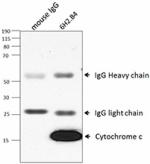
Immunoprecipitation/Western Blot analysis using purified ant... 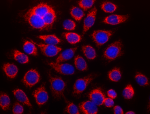
HeLa cells were fixed with 1% paraformaldehyde (PFA) for 10... -
Alexa Fluor® 488 anti-Cytochrome c
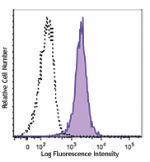
C57BL/6 splenocytes were treated with BioLegend's Fixation B... -
Alexa Fluor® 647 anti-Cytochrome c

C57BL/6 splenocytes were treated with BioLegend's Fixation B... 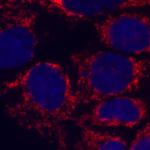
A-431 cells were fixed with 4% paraformaldehyde for 10 minut... -
FITC anti-Cytochrome c
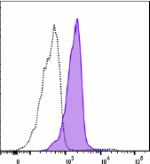
Typical quality control results from intracellular staining ... -
GMP FITC anti-Cytochrome c
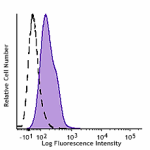
Typical quality control results from intracellular staining ... -
TotalSeq™-B0043 anti-Cytochrome c
-
TotalSeq™-C0043 anti-Cytochrome c

 Login/Register
Login/Register 






Follow Us